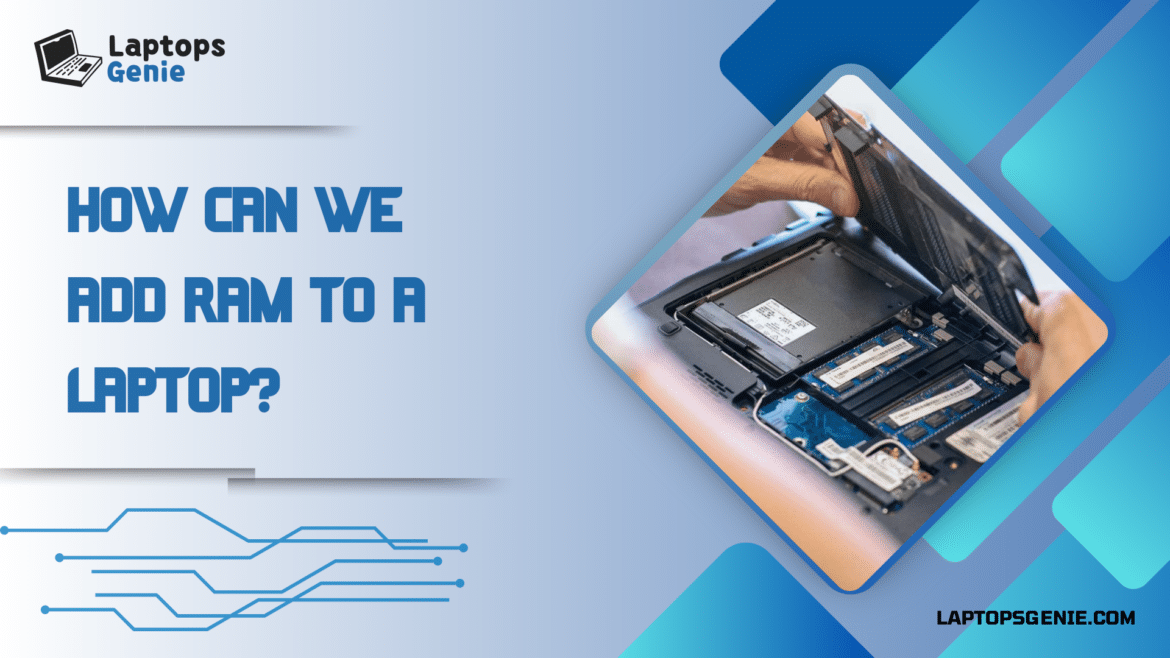Table of Contents
Is it time to change your laptop RAM? If you own a laptop, you must have an accurate idea of what RAM does to your computer. A Random Access Memory is really important to keep it going. Without the memory modules, you can never don’t expect your laptop or PC to work efficiently. Taking care of your gadgets, is always necessary, as their performance depends upon how you treat them. Therefore, we would recommend it is crucial to check the RAM from time to time. However, before straight away installing memory onto your computer, first have the proper know-how of how much your PC needs. Also, always make sure to get the model number checked. If you are a little lost in the tech world, fear not. We will walk you through every step of inserting RAM so you can upgrade the game of your smart tech gadget!
Significance of RAM
Sometimes, your laptop might cause issues that are worrisome for you. For example, a certain noise your laptop fan makes at times probably has something to do with the hardware inside or the RAM. Your laptop’s performance can be significantly improved by upgrading its RAM. It will let you run more apps, open more tabs in your browser, and manage demanding tasks like gaming and video editing more fluidly. RAM is your computer’s short-term memory, holding transient information for easy access. After the RAM module’s notch and slot are lined up, firmly push the module into position. Your laptop might have a fresh lease of life with this easy upgrade. Let us do a complete autopsy of why you would need a RAM and how to add RAM to a laptop.
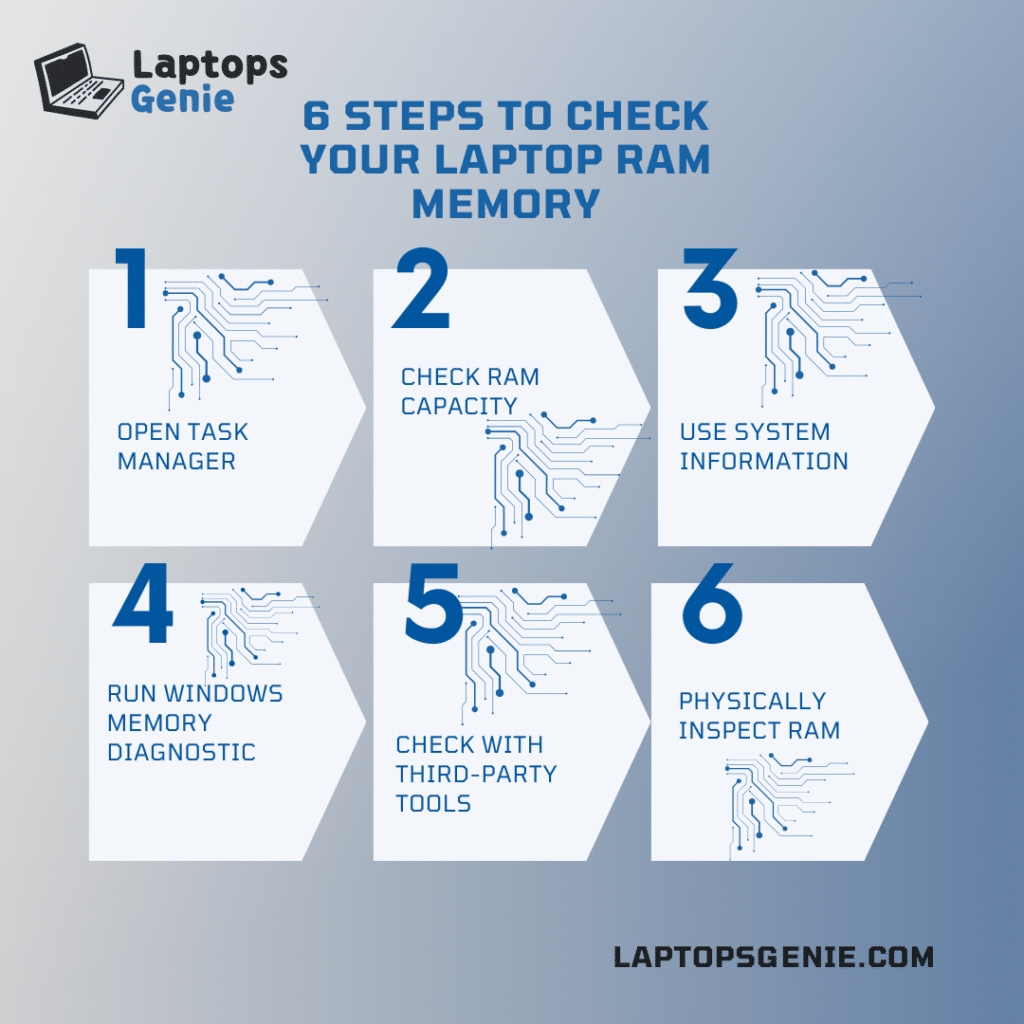
Checking How Much RAM You Have
Understanding your computer’s RAM (Random Access Memory) capacity is essential to appreciating its performance possibilities. RAM is one of the main factors affecting how effectively your computer can manage multitasking and execute intense applications. This step-by-step approach to add RAM to a laptop will help determine how much RAM your Windows computer has installed.
The Steps to Examine Memory in Your Laptop
Here’s a look at some steps to help you examine the memory inside your laptop.
Click the Windows Key
The first step to to add RAM to a laptop is to launch the Start menu.
- To do this, you can use the Windows key on your keyboard.
- The Windows key is usually found close to the bottom-left corner of your keyboard and bears the Windows logo.
Launch the Settings Application
After the Start menu appears, locate the gear icon named Settings.
- To access the Settings app, click on this button.
- Alternatively, you can type Settings and hit Enter in the search bar next to the Start menu.
Select System Preferences
Next step is the System preferences.
- Click System in the Settings application.
- This area includes settings for your computer’s power, storage, display, and notifications.
Navigate to About by Scrolling Down
Navigate down the left side of the System settings menu.
- There you will find the About option.
- Select About to see device specifications.
Look Under Device Specifications for Installed RAM
The ”About” section contains a category titled Device Specifications.
- Here, you should look for Installed RAM.
- This section shows the entire quantity of RAM installed on your computer.
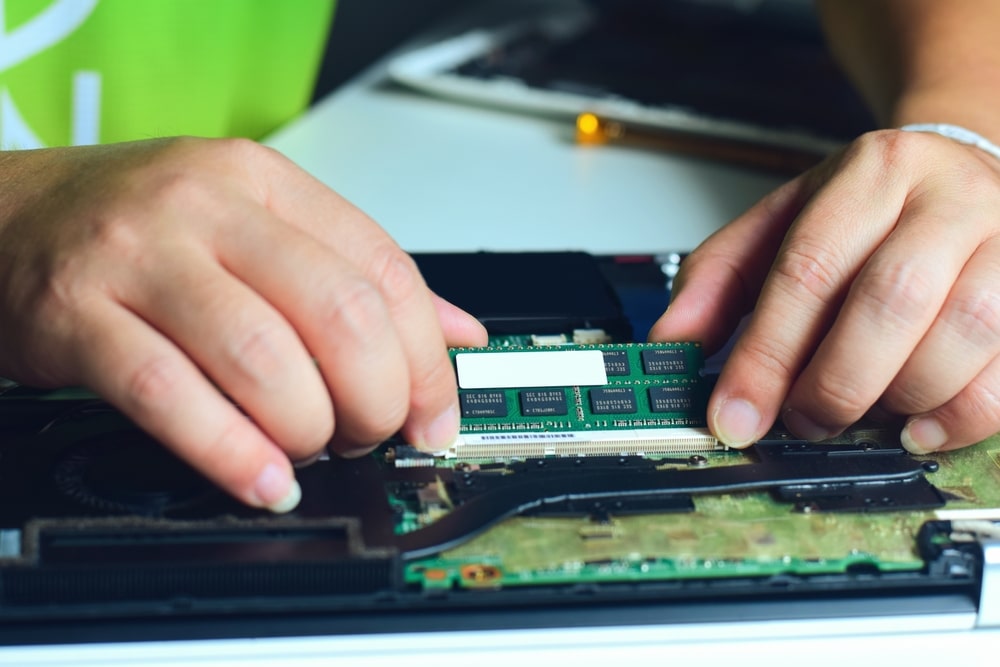
Tools Required to Check RAM
You’ll need a few essential tools to check RAM on your computer system effectively.
- Screwdrivers: Precision screwdrivers are essential to reach the RAM slots on PCs and laptops. One such set is the iFixit Pro Tech Toolkit. Therefore, with these tools, you may safely remove the cover to access the interior parts without harming the hardware.
- Electrostatic Discharge Strap (ESD Strap): An ESD strap is essential to stop static electricity discharge that can harm RAM modules and other delicate electronic components. Grounding yourself with an ESD strap reduces the possibility of static accumulation damaging the RAM or other internal components.
- Anti-static Mat: Working on an antistatic mat offers an additional line of defense against static electricity. It disperses any static charge that can build up and harm components, creating a safe working environment.
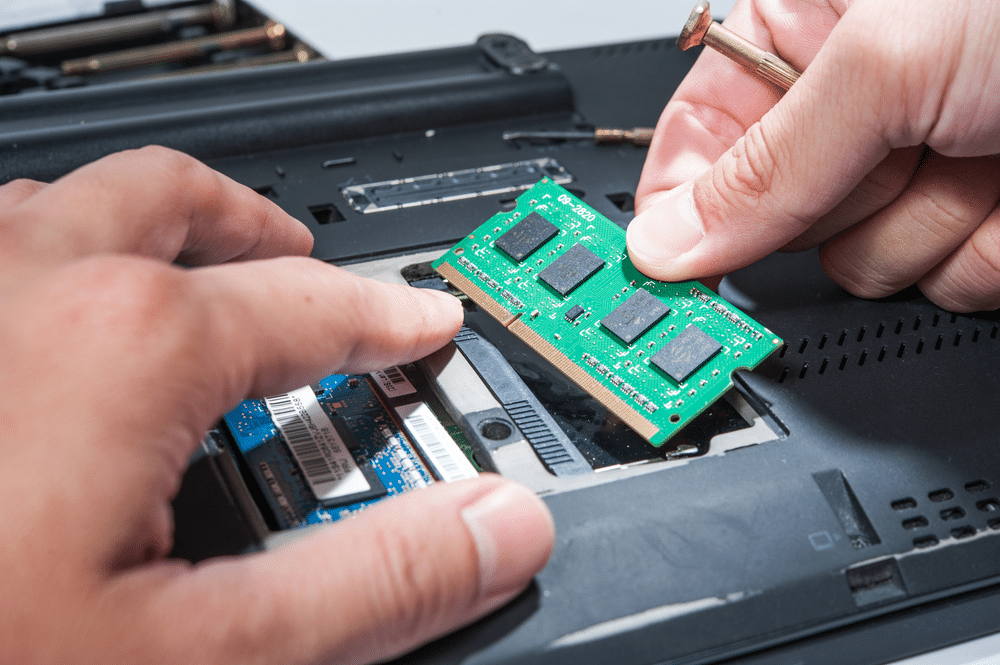
Steps to Adding More RAM to Your Laptop
Adding additional RAM can significantly improve Your laptop’s speed, especially when using memory-intensive apps. Here’s a thorough, step-by-step tutorial on replacing the RAM on your computer.
Set Up Your Work Area
To add RAM to a laptop, look for a spotlessly clean, well-lit workspace. Therefore, make sure there is adequate room to arrange the parts and screws.
Shut Off and Unplug the Power
After entirely shutting down, unplug your laptop from all power sources. First and foremost, safety!
Take Out the Battery
If your laptop’s battery is detachable, remove it. To add RAM to a laptop, if the computer’s battery is non-removable, you can disconnect the internal battery by opening the rear cover.
Get to the RAM Slots
Find the RAM storage on your laptop. Hence, you are usually located behind a small hatch fastened with screws or requiring the removal of the complete back panel fastened with several screws of different lengths.
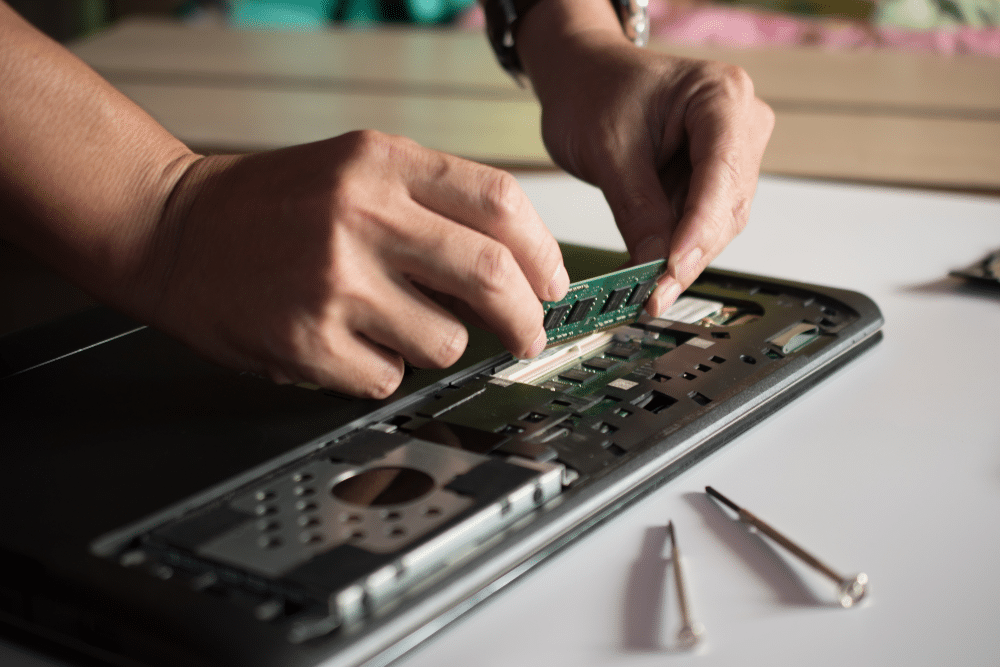
Get Ready to Manage RAM
Take caution when handling the RAM modules to prevent static electricity discharge. Before contacting the RAM, ground yourself by touching a metal surface.
Take out the Current RAM
Note the retention clips attached to the RAM module’s two sides. To free the RAM, gently press these clips outward. Remove the RAM module from its slot to add RAM to a laptop with caution.
Put the New RAM in Place
After removing the old RAM module, place it precisely in the slot. To guarantee correct orientation, RAM modules contain a notch that lines up with a key in the slot. Insert the new one at the same angle and gently press it down until it clicks into place.
Last-minute Checks
Lastly, make sure everything works properly after you upgrade your laptop. Your upgrade was successful if your laptop boots up without any problems and recognizes the additional RAM! Just like you replace your hard disk, the same way you can add RAM to your laptop.
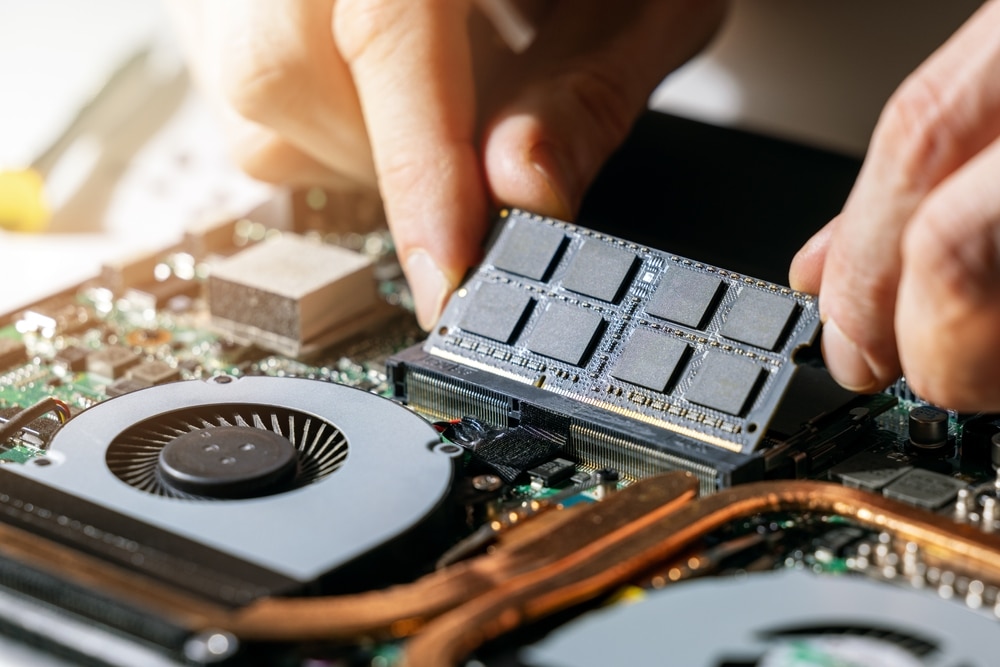
Final Thoughts
Coming to an end, are you prepared to boost the performance of your laptop? Your RAM needs to be upgraded. Hence, the first step to add RAM to a laptop is to use Task Manager to check your current RAM amount. Simple tools like a screwdriver are required. Before putting the memory RAM modules into the laptop RAM slot, it’s essential to align the notch, touch the gold contacts of the modules, and remove the battery to prevent static electricity.
In conclusion, to upgrade the RAM increases your system’s speed and makes it more capable of handling demanding programs and stores data. It can also be used to add extra RAM. Your laptop will be capable of handling any task you throw at it if you choose the correct type of RAM and handle it carefully.
SUPERCHARGE YOUR LAPTOP MEMORY!
